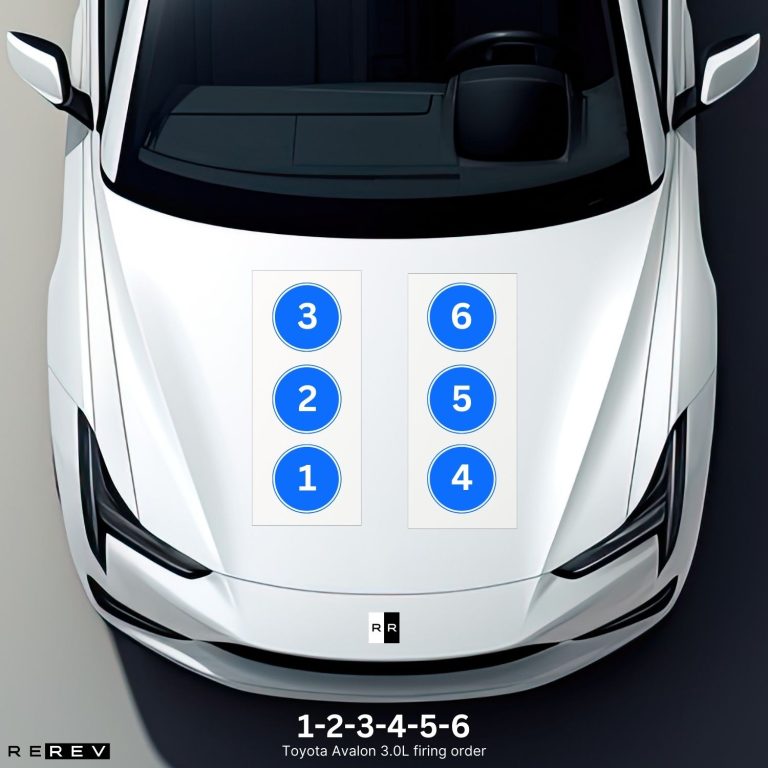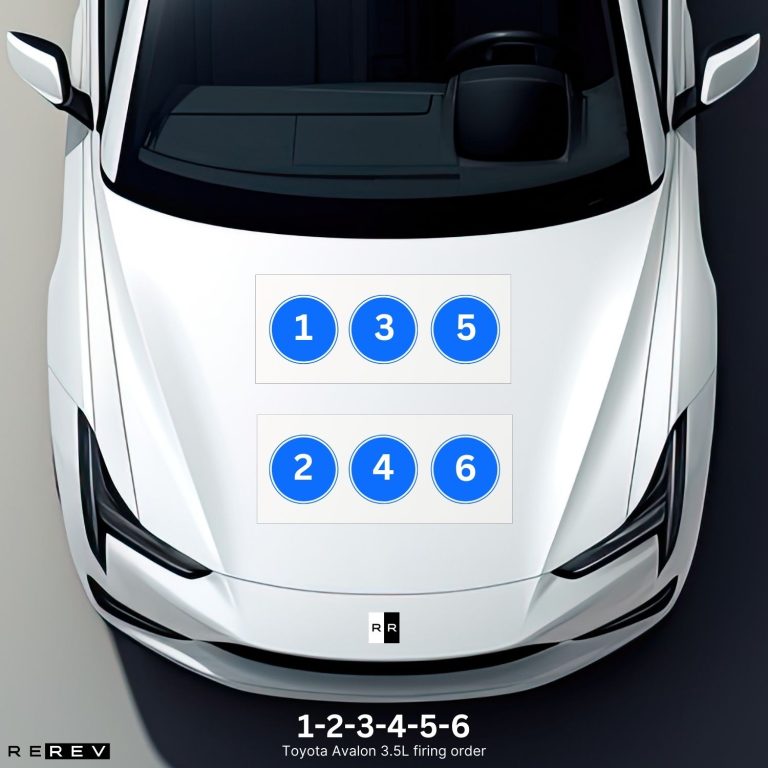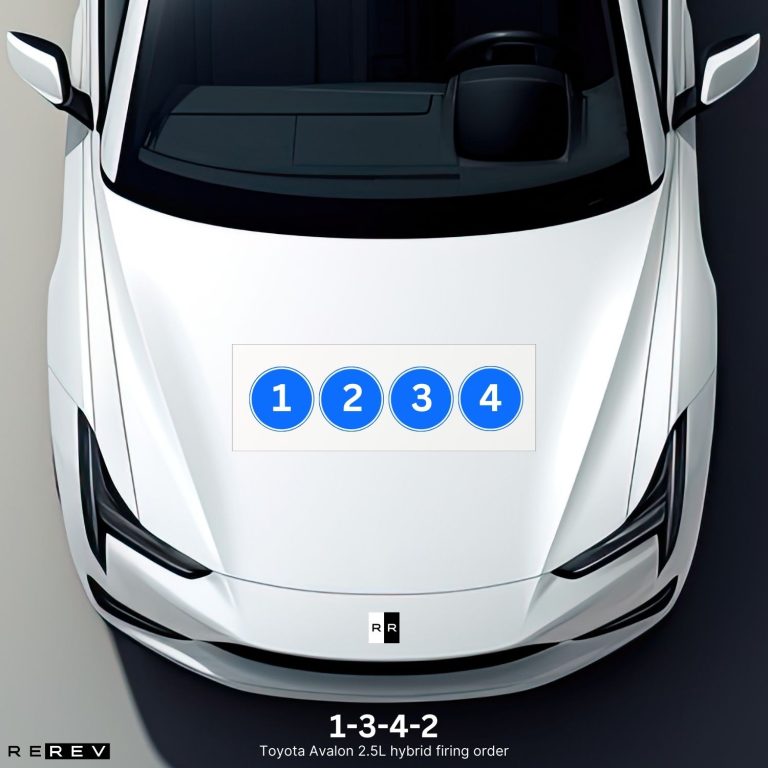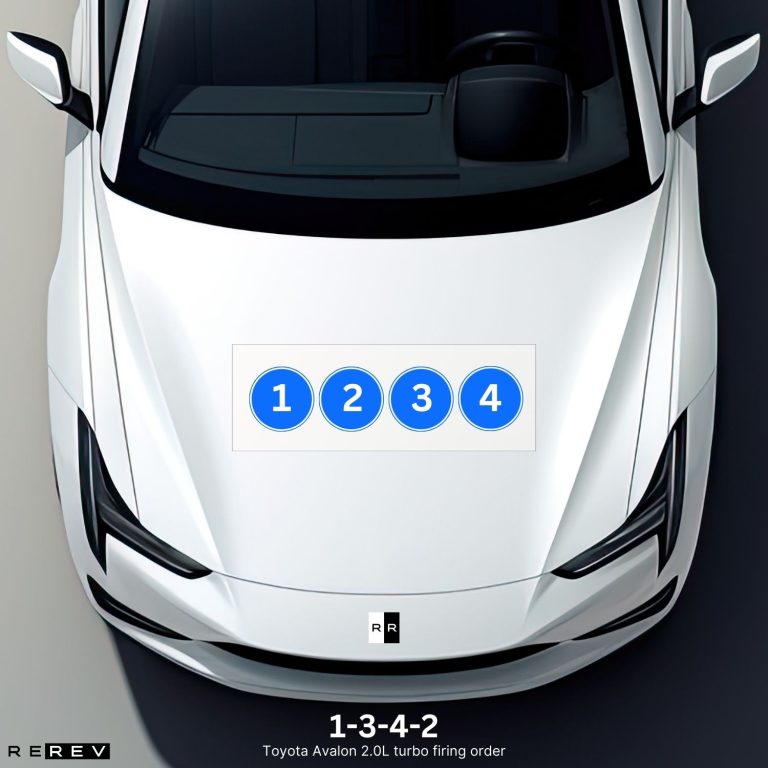Toyota Avalon (1994-2023) firing order — diagram & guide
Unlocking the potential of your Toyota Avalon with its firing order for improved performance.

The Toyota Avalon has been a staple model in Toyota’s luxury sedan lineup as the largest model. It’s been especially popular in the North American market since the year 1994 and during that time, we’ve seen a variety of engines used through the generations.
That’s why we wanted to give you an all-in-one guide on the Toyota Avalon (1994-2023) firing order so you can have an easier time managing the repairs on your behalf. It’s especially important to know the firing order for petrol-based engines so you can deal with misfires and spark plug replacements, so let’s take a closer look, shall we?
| AVALON YEARS | ENGINE | FIRING ORDER |
|---|---|---|
| 1st Gen (1994-1998) | 3.0L V6 | 1-2-3-4-5-6 |
| 2nd Gen (1999-2003) | 3.0L V6 | 1-2-3-4-5-6 |
| 3rd Gen (2004-2011) | 3.5L V6 | 1-2-3-4-5-6 |
| 4th Gen (2012-2017) | 3.5L V6 | 1-2-3-4-5-6 |
| 2.5L Hybrid | 1-3-4-2 | |
| 5th Gen (2018-present) | 2.0L Turbo | 1-3-4-2 |
| 2.5L Hybrid | 1-3-4-2 | |
| 3.5L V6 | 1-2-3-4-5-6 |
First-generation Toyota Avalon (1994-1998) firing order
During the early days of the Avalon as a model, Toyota decided to play it safe and use the 3.0-liter V6 as the only engine option. There were no extra engine options depending on the trims, so you’d get the famous 1MZ-FE engine with each trim.
Toyota Avalon 3.0L firing order

The key thing to understand about this engine is that the Toyota Avalon 3.0L firing order is 1-2-3-4-5-6. It means that all you have to do is identify the cylinder positions within the engine and check the cylinders from the first one to the last to keep track of the firing positions.
If a certain cylinder doesn’t fire when it’s supposed to, you can easily figure out which one is it with this method. The V6 engine has a simple cylinder configuration since the passenger’s side cylinders are 1, 2, and 3, while cylinders 4, 5, and 6 are on the driver’s side of the engine.
All the cylinders of this engine are numbered front to back, so it’s easy to find the first one and use the firing order from there.
Second-generation Toyota Avalon (1999-2003) firing order
Nothing much has changed with the second-gen model of the Avalon since the same 3.0-liter V6 engine was also used in this one. To be precise, the second-gen Toyota Avalon firing order is 1-2-3-4-5-6 because the only engine option available was the 3.0L V6.
Still, new engines were added from the third generation so we’ll focus on these as we’ve already discussed the 1MZ-FE engine and its cylinder configuration.
Third-generation Toyota Avalon (2004-2011) firing order
The third-gen Avalon is the first model to receive the new updated form of the V6 engine. This time it was the 3.5-liter V6 and this one is quite different from the starting 3.0L V6 engine, so let’s see what the main changes are in its firing order and cylinder positions.
Toyota Avalon 3.5L firing order

The firing order for the Toyota Avalon 3.5L is 1-2-3-4-5-6, so in that sense, the 3.5L engine is similar to the 3.0L V6. However, there are major differences in the way that the cylinders are positioned within the engine.
While you had banks with the first three and the last three cylinders in a 3.0L engine, the 3.5L V6 has an even and an odd cylinder bank. That means cylinders 1, 3, and 5 are in one bank, and cylinders 2, 4, and 6 are in another bank.
Plus, this engine is a transverse engine which means the cylinder banks are rotated so the cylinders don’t spread front to back but rather left to right. In this case, the odd cylinder bank is the top one, while the even cylinder bank is below it. So, the first cylinder of this engine is the upper-left cylinder if you look at it that way.
Fourth-generation Toyota Avalon (2012-2017) firing order
The fourth-gen of the Avalon is the first generation of this model where drivers could choose between two optional engines. The first one was still the 3.5-liter V6, while the second one was the 2.5-liter hybrid powertrain, so we’ll be focusing our attention on that one next.
Toyota Avalon 2.5L hybrid firing order

The firing order of the Toyota Avalon 2.5L is 1-3-4-2 and this one is a hybrid engine. That means it features a petrol four-cylinder engine in combination with an electric component which combined give a higher power output.
You can only do so much about the electric part since you’ll need an experienced mechanic for that one, but you can maintain the inline-four engine yourself. The cylinders of this engine are laid out from left to right, so you have the first one on the left-most side of the engine, and the fourth one on the opposite side.
Fifth-generation Toyota Avalon (2018-current) firing order
Engine options for different Avalon models seem to increase in numbers in each generation since the fifth-gen model featured three engine options. However, we’ve already discussed two of these since Toyota decided to keep the 2.5L hybrid and a 3.5L V6 engine in the offer.
The only new engine in this generation is a four-cylinder turbo and we’ll focus on that one next.
Toyota Avalon 2.0L turbo firing order

As the latest engine option introduced in the Avalon, the 2.0-liter one is a four-cylinder turbocharged petrol powertrain. The Toyota Avalon 2.0L turbo firing order is 1-3-4-2 just as it is for the previous 2.5-liter four-cylinder.
The two also share the cylinder arrangement since the cylinders are laid out from the first one on the left side to the fourth one on the right side sequentially.
Our take
Thanks to reliable Toyota engines, the Avalon is a model that you can expect to get high mileage from. Still, it’s even better if you can do some DIY maintenance to cut the costs and extend the engine’s life cycle, and hopefully going through our guide has helped you achieve just that.